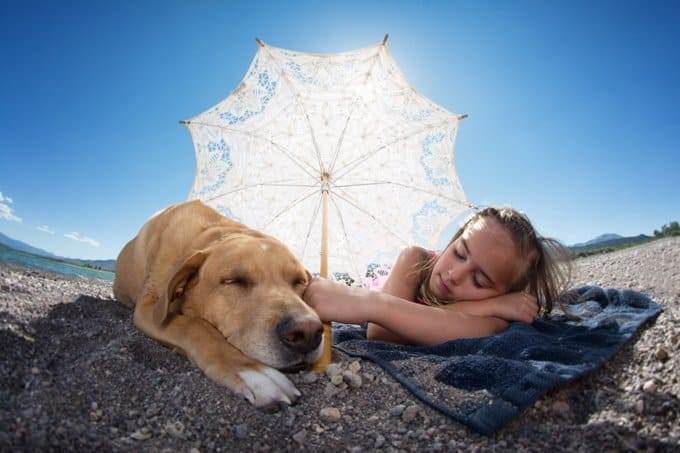Not all dogs were created with the same energy levels. Same with humans — where you’re likely to come across a person who loves running triathlons every weekend and hitting the gym with every chance they get, there would be another person who would prefer using the same time to read instead.
Dogs share this same personality trait as humans. Meaning, while one dog would prefer a good hour walk every day, failure of which they’ll end up frustrated and start bouncing off walls, there’s another dog that would be more contented with a shortened trot around your garden just a few times in a week.
It would, as such, be so inconsiderate of you to overburden them with an unsolicited extra exercise.
Spotting High Energy Dogs
Of course, every dog needs proper training and exercise. The only difference is that some dogs are high-energy, and are therefore naturally disposed to thrive under a strong foundation of training and a rigorous exercising routine that encapsulates lots of exercising and mental stimulation.
While you’re advised to walk your dog at least a few times in a week, that alone may NOT be enough to stimulate the dog and keep him fit. In other words, it’s extremely difficult for you to tire a high-energy dog out.
And where they’re NOT subjected to the right amount of exercise, they’ll be harboring lots of pent up energy that can prove to be detrimental to their overall well-being.
So expect the dog to be barking excessively, running away, following you around, and exhibiting a series of other serious behavioral issues.

Spotting Low Energy Dogs
Low energy dogs aren’t so active. So expect them to be spending most of their time lying around.
They’re therefore considered perfect companions for introverts and indoorsy people who prefer spending the bulk of their time in the house, alone.
In other words, low energy dogs are the couch potatoes who’ll still be contented with a few short walks done two or three times a week. Normally, this type of dog will be snuggling on a sofa next to you for the greater part of the day without getting fidgety or barking unnecessarily to catch your attention.
Low-energy dogs don’t care a whit about learning any advanced task. Neither are they athletic in nature. They, however, compensate for all this with their good behavior. They’re also easy to train and less stressful compared to their high-energy counterparts.
The trick is to find a dog whose energy level matches your own.

How to Figure Out Your Dog’s Energy Level?
Lots of dog owners are totally wrong about their dogs. They’re misled to think they have clear intentions about them when they’re truly lying to them by coddling them with the wrong kind of affection.
So the dog ends up frustrated, aggressive, and totally confused when the solution to all this could be something really simple.
You can start by finding out what’s the energy level of your dog. This could have so much easier if your dog could communicate.
But since dogs have no understandable way to communicate to human, you have to be keen on observing certain traits in your dog to make a calculated guess about their energy levels as you adjust where necessary until you’re able to figure out what’s the most appropriate activity level for the dog.
Having said that, here’s a list of things you can observe to figure out the natural energy level of your dog:
1) What’s the Breed of the Dog
As with any other animal you know, the dog can recognize their breed, species, and even their names when called. But that’s NOT to say that the most important aspect about them is their respective breeds.
It’s to be however noted that a dog’s breed, whether mixed or pure, will actually clue you in on where your dog leans in terms of energy levels.
For instance, Jack Russel Terriers, Dalmatians, and Siberian Huskies are generally known to be on the extreme side of super-hyper, and so are many of the hunting breeds of dogs you already know.
On the more chilled side, you have dogs such as pugs, bulldogs, and basset hounds to choose from.
So if you consider yourself introverted and are looking for a dog that will NOT be demanding too much of outdoorsy activities, then you’re better off limiting your choice to the three breeds of dogs, unless otherwise.
Just a reminder that you can get all the information about any dog breed on this Wikipedia page.
2) Try to Observe Your Dog Under Different Circumstances
Dogs are more social creatures. They have the innate ability to adjust themselves to accommodate the person they’re interacting with. Which is to say, if you’re a playful person, then you can expect your dog to switch into a full swing frolicking mode.
To keep it brief, every dog has the capacity to exhibit different characters depending on the kind of person they’re interacting with, where they’re, or if they’re from taking a long walk or if they spent the whole time cooped up.
It’s important that you understand if your dog really enjoys being taken out to a test drive or if he resents the whole idea of going out to the bone. You might want to experiment with this at different times.
First, it’s when the dog is super quiet and calm in his bunker; and second is when the shelter is super hectic with lots of dog activities going on.
A calm dog, when placed in a hectic shelter, will find his own spot and just lay there with a minimal amount of physical movement on his part. In other words, he’s laid back most of the time.
However, when the dog is super-active, then you can expect him to be running around the shelter all the time while barking and making unnecessary noises.
The dog can be doing all this even when there’s no one or no other dog around, a dead giveaway that the dog is indeed high-energy and that he prefers spending a good chunk of their valuable time playing outside or taking long walks.
This is particularly important when you’re about to adopt a dog from a rescue or breeder. Before you make the decision, you might want to dedicate some time off to interact with the dog.
Try visiting the dog while he’s in his shelter, before walks, or after he’s been taken out for a walk and weigh in on the character change.
Find out more about the dog’s behavior in the car, how he interacts with strangers, groomers, and other dogs and you’ll get a rough idea on the dog’s activity level.

3) Be a Volunteer Walker or Ask to Accompany the Walker
Taking your dog out is the perfect way to figure out his potential energy level. For starters, the environment at the shelter might be too limiting for the dog to display its true playing nature.
For this reason, you might want to offer yourself as a volunteer walker — and where you’re NOT allowed to, offer to accompany the walker as you keep a keen observing eye on the dog’s behavior.
There’s a whole lot you’ll be able to learn by doing this. First, find out if the dog is fired up for a walk. Is he reluctant? Is the dog pulling back or displaying reluctant behaviors while he’s been walked out of his shelter?
At some point, the dog may appear like he wants to head back home — and if this is the case, then that goes to show that he’s a low energy dog.
Also, try to find out if the dog is a puller. Does he run in front of the walker and try to pull them along? If so, the dog is super-energetic and as such prefers being subjected to intense physical activities.
It’s also crucial that you find out how long does the dog takes before he tires out while he’s out playing. If he can play for a full hour straight without wearing out, then his energy levels range from medium to high.
4) Find Some Playtime With the Dog
There’s no sure way to find out if your dog loves to play than to take him out to the field and give him the freedom to do what he pleases. Give him an opportunity to fetch something for you, and if he freely jumps at the opportunity without showing any form of reluctance, then he’s surely an active, high-energy dog.
Dogs love fetching, but NOT all of them. And while some dogs would prefer playing with ropes or squeaky toys, some are more comfortable with the idea of playing with other dogs.
For the less active kind, then don’t expect them to be much of big players.
When a dog prefers fetching, find out how long the dog takes before he tires out. Does he play until you make him stop or does he get tired in the middle of the game?
When the dog is killing the rope toy, how long does it take before he loses interest and calls it quits?
And while walking the dog, the longer the dog manages to walk before deciding to sit, the more likely he’s a high energy dog.

5) Watch how the Dog Interacts with Other Dogs
Find out if your dog is among the type that enjoys engaging other dogs in plays. Does it race other dogs around, or is he the type that prefers watching them play from the sidelines.
Some dogs aren’t exactly hostile to other dogs but are NOT the type that prefers hanging around them for long. So he’ll only engage a few dogs, exchange a few dog pleasantries and retreat to solitude.
And where the dog is engaging with other dogs, what games do they play? Is it a chase game or are they focused on playing bows and wrestling, which always ends almost immediately?
Taking your dog to the park and letting him engage with other dogs is the easiest way to figure out the dog’s energy level. However, before you reach any meaningful conclusion, you might want to try this a few times by taking your dog out to interact with other dogs on different occasions.
First, take the dog to a park near you before and after you’ve taken him to a walk and maintain a watchful eye. This should help you gather some useful insights on the dog’s true energy level to make necessarily calibrations on the kind of physical activities you engage him in and for what duration of time.
Conclusion
Dogs don’t misbehave because they’re naturally naughty. But because their needs for discipline, affection, and exercise aren’t administered to their fulfillment.
This is particularly the case where a high-energy dog isn’t getting enough exercise to dispel pent up energy so they can bring their mind to a submissive state that allows you to reinforce certain behavior while rewarding them accordingly.
In most cases, when a dog has more energy than their owner, then there’s a fair chance that they won’t be getting enough exercise. It’s for this reason that you’re also advised to figure out your own energy level to find that one dog whose energy level matches yours to a T.
References
- https://www.ahajournals.org/doi/abs/10.1161/01.CIR.79.5.1106
- https://www.sciencedirect.com/science/article/pii/S0168159100002100
Table of Contents




